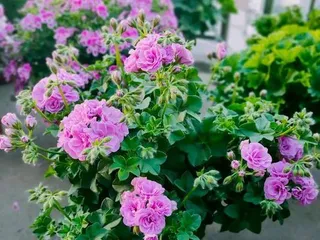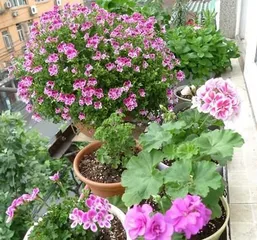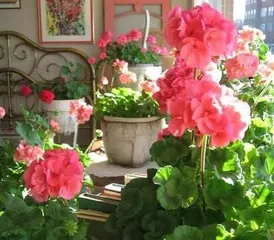Geranium is a beautiful flower with a rich fragrance and vibrant colors, suitable for planting in homes and offices. However, choosing the right pot and proper care are important skills. This article will detail the potted plant skills of geraniums from aspects such as pot selection, soil ratio, watering, fertilizing, pruning, pest and disease control.

I. Pot Selection
1. Suitable Pot Size
A pot suitable for geranium growth should have sufficient volume to accommodate root growth. Typically, round or square ceramic pots with a diameter of 20 cm to 30 cm and a depth of more than 15 cm are chosen.

2. Pot Material
Geraniums prefer loose, well-aerated soil, so it is recommended to use ceramic pots with good breathability. Avoid using plastic and metal pots, as these materials can affect soil aeration and drainage.
3. Pot Color

Color is also a factor to consider when choosing a pot. Geraniums can be paired with pots of any color, but it is recommended to choose light-colored pots, as they can better reflect sunlight and help increase soil temperature.
II. Soil Ratio
4. Soil Type
Geraniums thrive in loose, well-aerated, and well-draining soil. When preparing the soil, a mixture of leaf mold, garden soil, and crushed perlite can be used, with a mixing ratio of 5:3:2.
5. Fertilizer Addition
During the soil preparation process, organic fertilizers and phosphate fertilizers should be appropriately added. Organic fertilizers can increase soil fertility and improve soil structure, while phosphate fertilizers can promote geranium growth and flowering.
6. Soil Treatment Before Planting
Before planting, the soil needs to be sieved and disinfected to remove impurities and kill pathogens, which could affect the growth of geraniums.
III. Watering and Fertilizing
7. Watering Control
Geraniums need to keep the soil moist, but not overwatered, as this can lead to overly wet soil and root rot. During hot summer months, watering frequency should be increased, but avoid watering during midday and afternoon when the sun is strong.
8. Fertilizing Time
Geraniums need to be fertilized with organic fertilizer once a month, preferably in the morning or evening.
9. Fertilizing Method
Fertilizer can be evenly spread on the soil surface or mixed into the soil. After fertilizing, water moderately to promote the penetration of the fertilizer.
IV. Pruning Techniques
10. Timely Pruning
Timely pruning helps with geranium growth and flowering. Pruning is usually done in spring and autumn, cutting off old leaves and stems to promote new shoot growth.
11. Pruning Method
Pruning requires sharp scissors to cut off dead, withered, or pest and disease-damaged parts. Be careful not to damage healthy stems and leaves.
12. Controlling Plant Shape
Pruning can control the shape of the geranium, making it neater and more aesthetically pleasing. The plant can be kept in a round or elongated shape for better ornamental effect.
V. Pest and Disease Control
13. Disease Control
Common geranium diseases include gray mold, powdery mildew, and leaf spot, which need to be controlled in a timely manner. Fungicides can be sprayed on the plant surface to prevent fungal infections.
14. Pest Control
Common geranium pests include aphids and spider mites. Insecticides can be sprayed on the plant surface, or they can be manually picked off.
15.
Geranium is a flower suitable for potting, but it requires attention to selecting the right pot and providing proper care. The pot should have sufficient volume and good breathability. The soil should be loose, well-draining, and supplemented with appropriate organic and phosphate fertilizers. At the same time, it is necessary to control the amount of water, fertilizing time, and pruning methods to prevent pest and disease infestations. Only with proper care methods can geraniums become healthier and more beautiful.